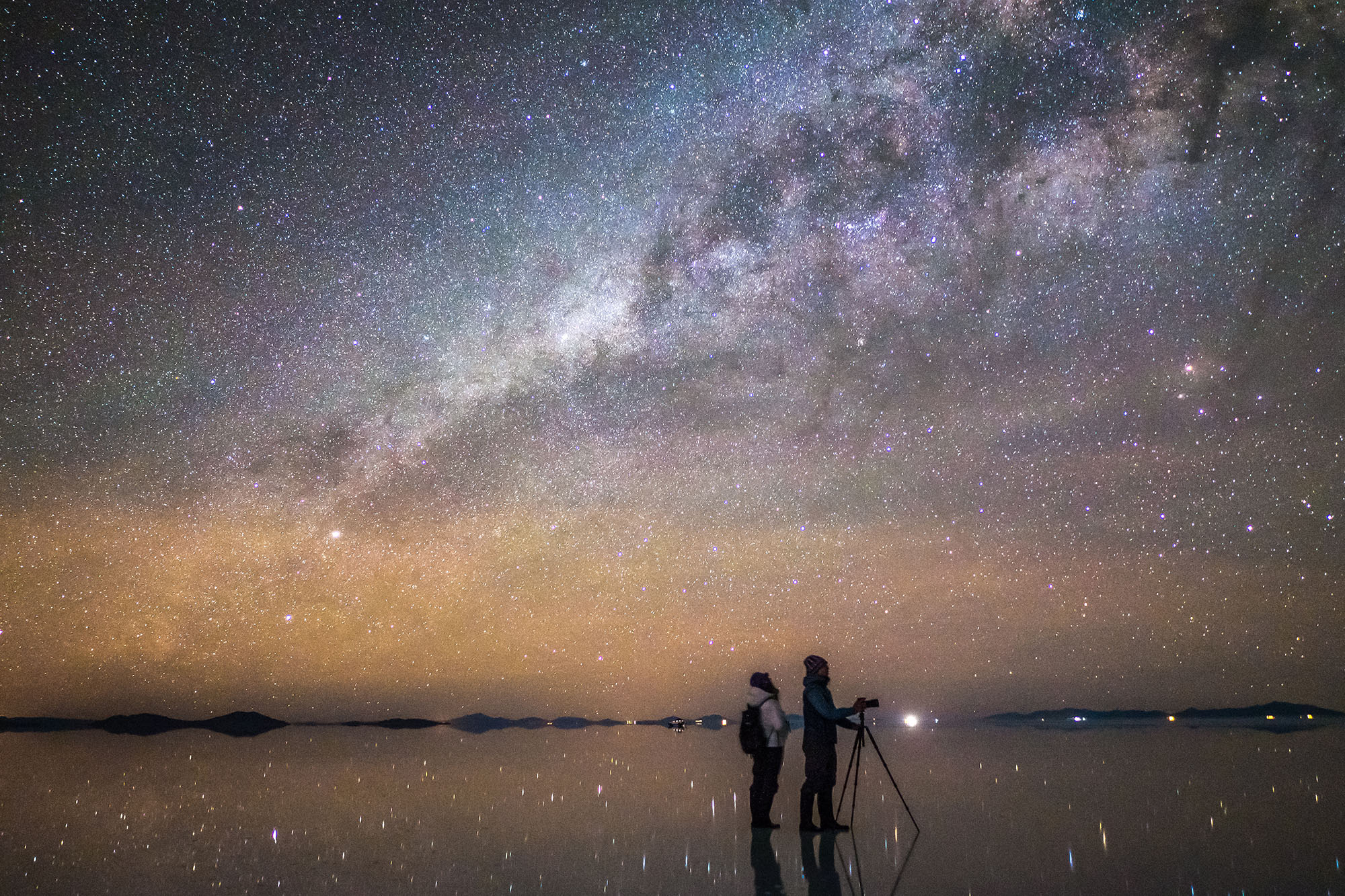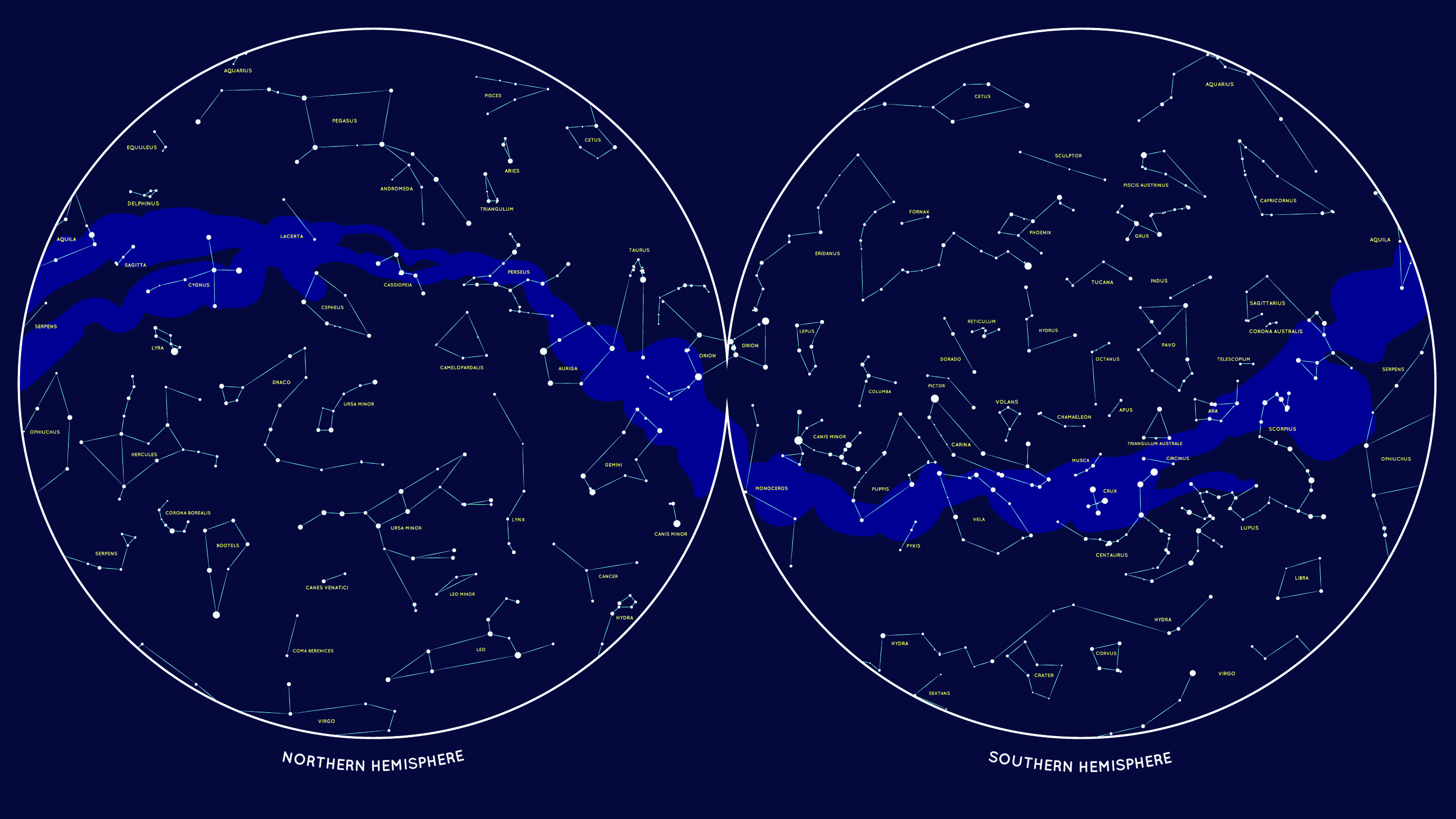Growing up observing the night skies from the Northern and Southern hemispheres
People in different parts of the world see different skies.

As a child, I enjoyed reading about space and had a collection of children's astronomy books. At a young age, I learned that living in Los Angeles County also meant that I'd have a limited view of the skies.
Though I was able to visit the Griffith Observatory from time to time, I rarely had a good view of the night sky. Instead, I'd visit mountains over Los Angeles where I could look down to see lights coming from the city. It's a cool sight, but it doesn't compare to what space has waiting for us.
I owned a cheap pair of binoculars, but these didn't help much beyond making it clear how big a problem light pollution is for urban skywatchers.
Related: Losing darkness: Satellite data shows global light pollution on the rise
My first road trip
My parents moved away from California when I was 17 years old, and as part of this, I had to take a Greyhound across the country so I could meet my family at our new home. I went from Los Angeles to Mississippi and spent three days seeing small, rural towns for the first time. Along the way, the bus had a mechanical failure in the middle of nowhere in Arizona. This annoying inconvenience actually gave me my first-ever view of a giant swath of stars, because there were no city lights around to spoil the view. I was still a teenager and didn't understand the many factors that can affect my casual stargazing, like light and air pollution.
The Southern Hemisphere
In 2013, I moved to Buenos Aires, Argentina. Despite being in a large city, I was pleasantly surprised that I could make out a few stars here and there, even though there are no significantly elevated areas in the city. This is because elevation can have an impact on the number of stars you see. Other factors that can influence you include light pollution and humidity.
The real treat though, was the Atacama Desert in Chile, and the Salar de Uyuni, the world's largest salt flat, located amid the Andes mountains in southwest Bolivia. San Pedro de Atacama, located near the Bolivian border in Chile, is a small desert town approximately 7,900 feet (2,400 meters) above sea level. It's the driest place on Earth; rarely will you see a cloud there.
Breaking space news, the latest updates on rocket launches, skywatching events and more!
As I remember it, the moonlight shines perfectly, the cloudless sky allows you to look up and stargaze to your heart's content, and the Atacama Desert has some Earth-shattering views. On the outskirts of town, you can bike to the Valley of the Moon and the Valley of Mars, to name a few interesting locales. You also get a view of the Licancabur volcano.
Across from the Atacama are the salt flats of Uyuni, a stunning place approximately 12,000 feet (3,658 m) above sea level. There’s also water in some parts of the salt flats. If you're lucky enough to watch a sunset there, you'll not only see as many stars as possible, you'll also see their reflection at your feet because of the water’s mirror effect against the white salt.
But why do these differences exist?
Our planet is separated by an imaginary line called the equator that splits Earth into the Northern and Southern hemispheres. There's much more land mass in the Northern Hemisphere, and about 90% of our fellow citizens live there as well, contributing pollution of all kinds — like smog and light pollution — that can make it tough to gaze at the stars.
Of course, there are more reasons why my experiences observing stars were so varied. To better understand why skies look different depending on where I was on Earth, I spoke to David Weigel, the planetarium director of the U.S. Space and Rocket Center in Huntsville, Alabama.
Using the Worldwide Telescope, an open-source telescope that allows you to easily view space online, Weigel explained that the solar system's eight large planets are on the same ecliptic plane. In addition, he explained that the Earth is tilted on its axis of rotation by 23.5 degrees. In essence, not only is Earth orbiting around the sun on a designated plane, it is doing so while being inclined. Earth's tilt is the reason why the seasons vary — and why the Northern and Southern hemispheres experience opposite seasons.
Seasons don't just affect the weather; they also explain why summer has longer days with more sunlight, and why winter has less sunlight (regardless of which hemisphere you're in).
Weigel explained that where you are in the world can affect the constellations you see at night.
"Constellations are our two-dimensional representation of a three-dimensional sky. That three-dimensional sky doesn't change too much in the time scales that we are living in," Weigel said.
Skies haven't changed too much since the beginning of recorded time, he added. "Throughout the course of 24 hours, as the Earth rotates completely on its axis, we can see the entirety of the sky that is visible from our latitude."
In other words, if you live in the Northern Hemisphere, you can see all of the constellations on the northern part of the sky, and maybe some of what is visible from the Southern Hemisphere. If you travel downward toward the equator, you'll be able to see more of the sky from the Southern Hemisphere's perspective, while also losing more of what you'd normally see in the Northern Hemisphere.
The time of day is truly what affects how much of the sky you can see wherever you are. Since the sun only shines for about half the day, you lose sight of constellations blocked by sunlight. Plus, because the Earth is orbiting the sun, you can see different parts of the sky depending on the time of year. Even so, there are some things you can't see at all depending on which hemisphere you live in. This explains why eclipses, meteor showers, and other phenomena can only be seen on certain parts of the Earth.
Light pollution can also affect stargazing, but so can smog, elevation, and even weather or storm patterns, such as the tornadoes and thunderstorms that frequently create obstacles in the U.S. Space and Rocket Center's hometown, Huntsville.
Weigel said that light pollution competes with starlight, which travels long distances in order to get to Earth. Los Angeles, the city where I grew up, is full of things that can hinder stargazing. In contrast, the Atacama Desert and salt flats of Uyuni made for a more enriching experience attempting to view stars and planets.
Sparsely populated, high above sea level, lightly polluted and with cloudless weather — these are the attributes that make a place great for skywatching. And you don't have to go all the way to Atacama or Uyuni to find such spots. As to why I was able to see more stars in Buenos Aires than in Los Angeles even though they're both large cities, I have no explanation, but Buenos Aires is far less polluted than L.A., and this may be the reason why.
Getting started on stargazing
There are now many more tools for amateur astronomers than there were when I was growing up in the 1990s. For anyone who wants to get started, Weigel recommended the Star Chart App (for iPhone and iPad), Worldwide Telescope, and OpenSpace software.
Ingrid Cruz is a freelance writer and independent filmmaker. You can follow here on Instagram and Twitter @ingridiswriting. Follow us on Twitter @Spacedotcom and on Facebook.


